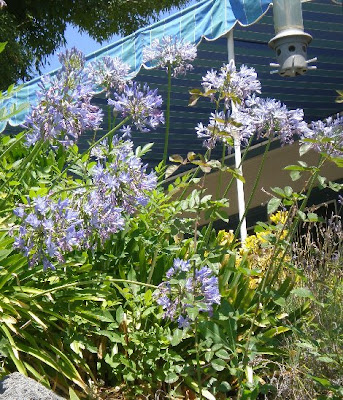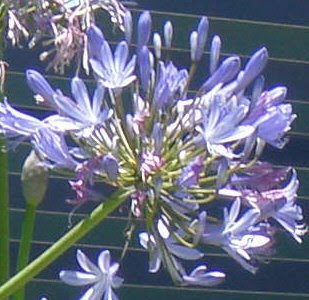 Agapanthus is sometimes called Lily of the Nile, African Blue Lily, or similar names. There are several species of this South African native, but most sold in nurseries here are agapanthus praecox or its subspecies agapanthus orientalis, even though they are sometimes mislabeled as agapanthus africanus. Once established, they are drought tolerant, and do well in almost any area with well-drained soil. They like full or part sun, and bloom during spring and summer. Some produce white flowers, others are light blue or lavender. Hummingbirds love them!
Agapanthus is sometimes called Lily of the Nile, African Blue Lily, or similar names. There are several species of this South African native, but most sold in nurseries here are agapanthus praecox or its subspecies agapanthus orientalis, even though they are sometimes mislabeled as agapanthus africanus. Once established, they are drought tolerant, and do well in almost any area with well-drained soil. They like full or part sun, and bloom during spring and summer. Some produce white flowers, others are light blue or lavender. Hummingbirds love them!Agapanthus has rhizomatic roots, and can be propagated by division. The best time to do this is in the fall when blooming is over. You can simply dig up a clump, divide it into a few sections, and plant each one separately. They will also sometimes spread on their own. When you are working with this plant, be aware that its sap can be extremely irritating, causing a poison-ivy like rash on the skin, and severe ulceration of the mouth and mucous membranes. I wear long sleeves and/or elbow-length gloves when I cut or replant them.





 Winter in South California is a lot like spring in other parts of the country, so flowers have been blooming for months. Now that spring is really here, there is even more garden action. These photos were taken in my back yard.
Winter in South California is a lot like spring in other parts of the country, so flowers have been blooming for months. Now that spring is really here, there is even more garden action. These photos were taken in my back yard.